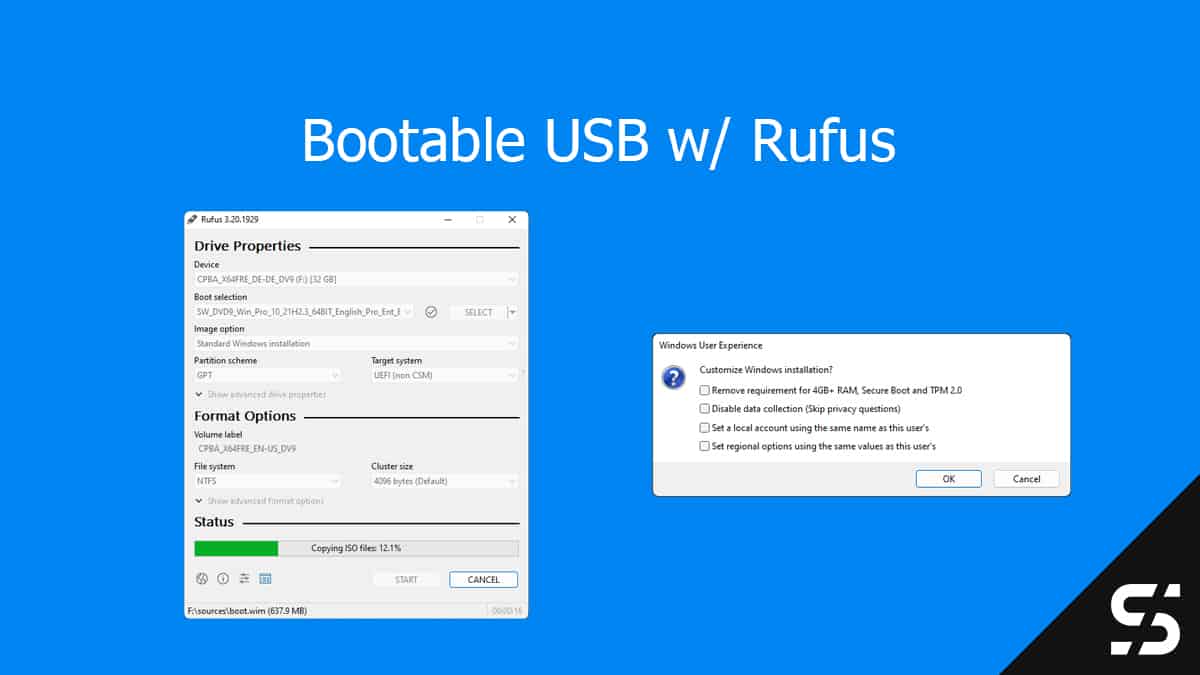Whether you're planning an upgrade or a fresh installation, having a bootable USB drive ready can be a lifesaver. This guide walks you through the process of creating a bootable Windows USB drive using Rufus, a reliable tool for crafting bootable USB drives with ease.
Table of Contents
Requirements
- You need an ISO of the desired Windows version to start
- Microsoft makes Windows 11 available to the public: Download Windows 11 (microsoft.com)
- administrator rights
- Tools: Rufus - Create bootable USB drives the easy way
- USB stick with at least 8 GB memory
Create a bootable Windows USB drive
Download Rufus from the link above and run the EXE.
If you do not have admin rights, you will be prompted to enter an administrator.
- Now connect a USB stick and check that the right one has been selected.
- Then open the desired ISO using the "SELECT" button.
- And to start you select "START"

After clicking on Start you will be asked a few options. Depending on the ISO, you will see more or fewer options here.
But you leave them all deselected and confirm with "OK".

After a short query / warning that the data on the stick will be deleted, the creation process starts.


Once Rufus has completed the Windows USB drive, the status changes to "READY".
Now you can start creating another drive if necessary.

Bypass Windows 11 requirements
Yes, there is an option to bypass the Windows 11 requirements (TPM 2.0 and at least 4 GB RAM) for the Windows 11 image.
However, this option should be used with caution!
Michael Niehaus shows here what exactly is being done and why it can be critical:
Rufus isn't magic: How it modifies Windows 11 media – Out of Office Hours (oofhours.com)
I've also used the option a few times and it has worked each time. However, the function should only be used for testing purposes be used. With the connection of TPM 2.0, basic security functions are bypassed.
If you still want to use the option, it is the first tick.
This will only come if the ISO also brings this requirement with it.






